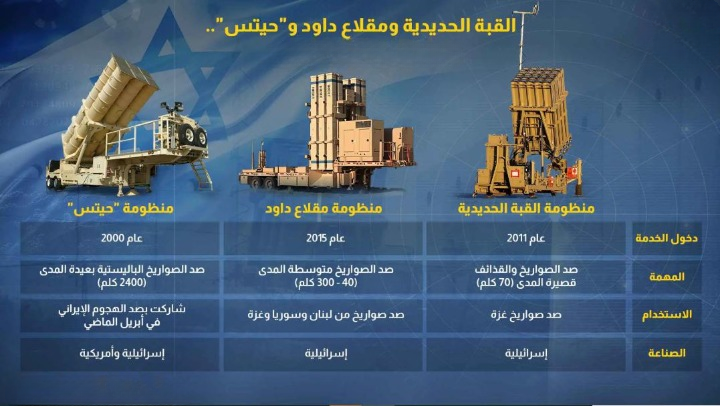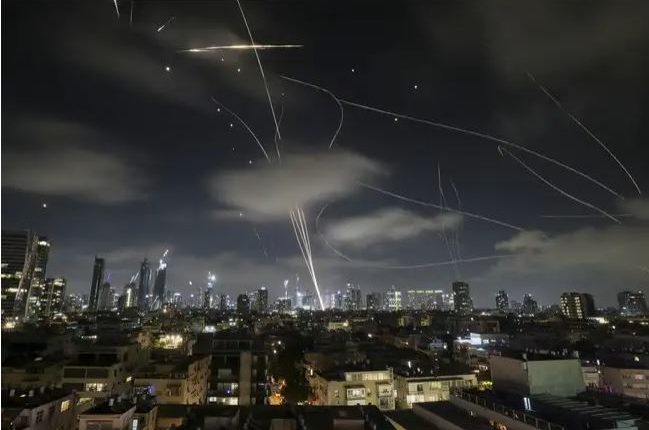With Its Old Missiles… How Iran Exhausted the Iron Dome and Disrupted Israel’s Defenses
In a remarkable shift in the dynamics of unconventional warfare, Iran has successfully managed to overwhelm Israel’s Iron Dome system through a massive missile assault using older, low-cost rockets, creating unprecedented disarray in the Zionist entity’s air defense performance.
According to military reports and strategic analyses, the Iranian strike did not rely on advanced technology, but rather on sheer firepower and multi-directional launches, which significantly reduced Israel’s interception capabilities and imposed massive financial strain amid declining efficiency of its defense systems.
Israel’s Missile Defenses Under Severe Pressure
As Iran ramped up its missile launches, Israel was forced to deploy its entire array of defense systems—including Iron Dome, David’s Sling, Arrow, Patriot, and THAAD—at an unprecedented rate.
Sources indicate that if the attacks continue at the current pace, Israel could deplete its stockpile of interceptor missiles within 10–12 days.
Interception Rate Drops from 90% to 65%
According to NBC and The New York Times, recent data shows a sharp decline in Israel’s missile interception success rate—from around 90% down to 65% in the past 24 hours.
This drop is attributed to missile shortages and the complexity of Iran’s tactics, which include cluster warheads, maneuverable projectiles, and electronic jamming that mislead radar systems.
Skyrocketing Cost of Missile Defense
Each interception attempt comes with a hefty price tag—ranging from hundreds of thousands to millions of dollars per day.
-
The Iron Dome alone may cost tens to hundreds of millions daily,
-
While David’s Sling and Arrow systems can run up to $4 million per interception.

Iran’s Evolving Tactics
Iran deployed a diverse mix of cheap and advanced weapons, including:
-
Low-cost rockets with multiple submunitions
-
Hypersonic missiles
-
Electronic warfare tools to jam radar and misguide interceptors
-
Drones and decoys launched alongside missiles to confuse defense systems
They even used electronic noise fields around interceptors, causing malfunctions or misfires, and forced Israeli systems to use extra resources by flying missiles in staggered waves.
Maintenance Gaps and Strategic Shift
Although Iran has reduced its attack rate from mass launches to more targeted strikes, Israel’s air defenses remain under strain. This pressure is pushing Tel Aviv to increase offensive operations within Iran, aiming to destroy launch infrastructure instead of relying solely on defense.
Military expert Mohammad Al-Samadi told Al-Araby TV that Iran’s old missiles, despite their simplicity, proved effective when launched in dense salvos and accompanied by:
-
Electronic disruption
-
Radar confusion
-
Missiles set to fly in layered formations to drain Israeli defense systems
This aligns with a report by Eurasian Times, which credited electronic warfare and unconventional launch methods with significantly lowering Israel’s interception rate.
Analysts: “Cheap Missiles Beat Expensive Defense”
Analysts note that Iran’s use of mass-produced, affordable missiles disrupted Israel’s high-tech, expensive radar and defense systems.
With the Iron Dome overwhelmed, Iranian strikes penetrated using hypersonic missiles and fragmentation warheads, which are difficult to track and even harder to intercept.
As a result, Iran’s strategy successfully exposed the vulnerabilities of Israel’s air defense, forcing the occupation to either:
-
Spend exorbitant sums reinforcing its systems, or
-
Shift toward offensive retaliation, risking wider regional escalation.
Conclusion:
By leveraging low-cost warfare and high-pressure tactics, Iran turned its old missile stockpile into a strategic weapon, not just to strike, but to economically and tactically exhaust one of the world’s most advanced missile defense networks.

